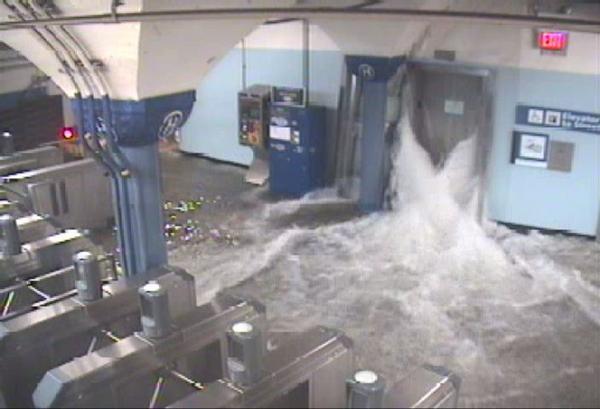 In late November, as Garden State lawmakers grilled the state’s agency officials on their responses to Superstorm Sandy, New Jersey Transit executives seemed rather defensive. The rail agency had kept a significant portion of its rolling stock in low-lying areas, and employees and executives kept excusing their decision on the grounds that the areas had never flooded before so why would they know. In light of a new report, these mistakes, which I examined in November, seem even worse today.
In late November, as Garden State lawmakers grilled the state’s agency officials on their responses to Superstorm Sandy, New Jersey Transit executives seemed rather defensive. The rail agency had kept a significant portion of its rolling stock in low-lying areas, and employees and executives kept excusing their decision on the grounds that the areas had never flooded before so why would they know. In light of a new report, these mistakes, which I examined in November, seem even worse today.
As The Record reported yesterday, NJ Transit officials had a document on hand that warned of vulnerabilities and flood risks. The final document [pdf] had been delivered to the agency in June, four months before Sandy hit, and NJ Transit failed to act on its recommendations. That $400 million price tag for the damage continues to be a tough one to swallow.
Karen Rouse has more:
The $45,990 study included a map that shows the Kearny and Hoboken rail yards sit squarely in “storm surge areas.” Sandy floodwaters inundated both yards, swamping locomotives and rail¬cars — including 84 new multilevel passenger cars — and damaging spare parts. In those two yards, damage to railcars and locomotives was estimated at $100 million.
Nearly two months after the storm hit, NJ Transit’s rail service is still not operating at 100 percent. And the decision to leave locomotives and passenger cars in the low-lying yards has provoked a torrent of criticism from lawmakers and rail advocates. Throughout it all, NJ Transit officials, at hearings in Trenton and Washington, D.C., have maintained that they had no prior knowledge the yards could flood.
“I wish I had had the foresight and the understanding to know that a yard in the Meadowlands, in Kearny, that the western part of the yard in Hoboken, which had never flooded before, was going to flood. But I didn’t,” Executive Director Jim Weinstein told the Assembly Transportation Committee during a Dec. 10 hearing that focused largely on the agency’s costly decision not to move the equipment out of harm’s way…
NJ Transit spokesman John Durso Jr. said the report was read by David Gillespie, NJ Transit’s director of energy and sustainability, but characterized it as “generic,” with no specific predictions for flooding of the magnitude caused by Sandy…
Weinstein acknowledged to the Assembly committee earlier this month that while the report was completed, “I confess I have not studied it…That study concluded that we had as much as 20 years to adapt to the [climate] changes that are taking place,” he told lawmakers.
He also said NJ Transit relied on weather reports that showed there was a 10 percent to 20 percent chance of flooding in the yards and that the yards had never flooded before in 30 years. Neither Weinstein nor Durso offered details on the data the agency relied upon.
New Jersey rail advocates are livid. “If someone said there is a 10 to 20 percent chance you’ll get hit crossing Route 1, would you?” Joseph Clift, a former LIRR planner and current NJ-ARP member, said. “That’s basically the equivalent risk they took in the Meadowlands.”
The report also flies in the face of public statements made by New Jersey Transit in November and makes me question current leadership’s ability to lead effectively. Yes, it’s true that these areas had never flooded before, but New Jersey Transit officials essentially played chicken with key equipment and infrastructure. With the forecasts from Sandy particularly dire and state leaders urging residents to move from flood-prone areas, New Jersey Transit left its rolling stock in a spot rather likely to flood. And then when it flooded, they were surprised it did.
To me, New Jersey Transit’s attitude toward Sandy and its aftermath speaks to the way rail is classified in the northeast. Despite the fact that more commuters rely upon commuter rail to get into the city each day than they do bridges and tunnels, rail is treated as an afterthought. It’s impossible to fight for an expansion of the rail network or additional service, and executives running these organizations don’t seem too concerned with the safety and well-being of equipment. Sandy was an absolute failure of leadership at New Jersey Transit, and someone should be held accountable.




